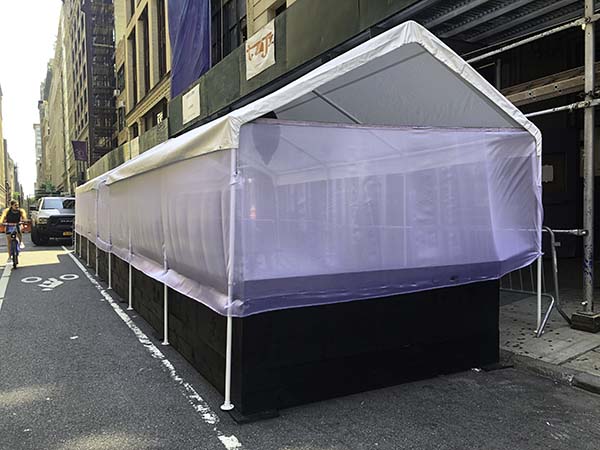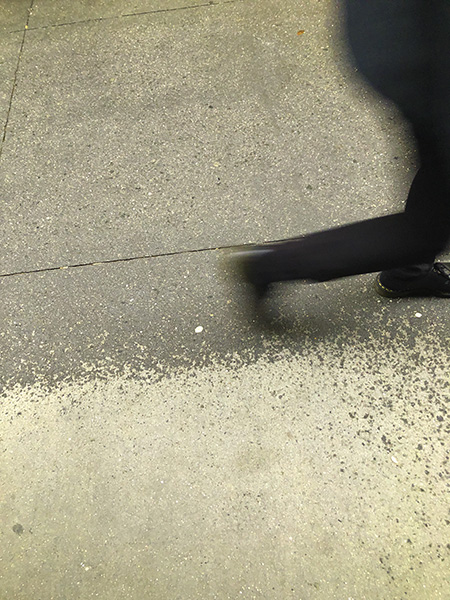How to Respond to Art Licensing Inquiries
You’ve just received an email from someone who says they’re interested in licensing some of your art. That sounds like good news and cause for celebration?
Most artists, especially those who have never licensed their work before, would be excited, but possibly a bit confused as well.
I hear from artists all the time who have been contacted by individuals or companies that want to use their work, and they just don’t know what to do next because this is a new experience for them.
They don’t know how to navigate the road ahead, or even how to get moving. A door has opened, but what do they need to know before they walk through that door in unknown territory? So here’s a brief guide to what to do.
STEP ONE – Find out who contacted you.
Yes, I know that they signed their email Andy or Andy Something and you have their email address, but that’s not enough.
Unless they include a signature line that gave their title or job function, the name of their company, where they’re located and other relevant information, you’ll need to ascertain just who they are.
Don’t be afraid to ask.
Thank the person for writing and tell them you’re most interested. What company are they with and what do they do? How did they hear of you and what art interests them? Do they have an online site for their company that tells about the company and shows the products they produce?
Sometimes their email address will be so-and-so@companyname.com. That might tip you off to a live company site, but often it doesn’t, and fairly often their address will be at Yahoo or AOL or some other email provider. So it’s best to ask directly.
STEP TWO – Reply that day.
Not in two or three or five days or next week, but that day. Not after you’ve spoken to your spouse or friends or muddled it over in your head, but right away.
A prompt response tells the inquirer that (a) you’re interested, and (b) you respond quickly, and (c) sets the tone for your future communications.
Art and licensing directors want to work with artists who are interested, eager, responsive, and easy to talk to and work with. Responding fairly quickly is an important step in that direction.
If you can research the company online before you respond, well and good, but don’t wait until others have given you their best advice to what to do. Just respond, nicely, and see what behind that door you’re opening up.
STEP THREE – Be friendly.
The best licensing relationships, the ones that last for years and produce lots of good products and lots of income, are the ones that become business friendships.
That doesn’t happen automatically. Rather, it starts with pleasant, friendly, relaxed communications, back and forth, that will put the relationship on a positive footing from the very beginning and grow into a real and mutually-beneficial business friendship.
The best licensing relationships I have are with people who are happy to hear from me, who like speaking with me or emailing me, know they can count on me when in need, and have no reluctance in contacting me. And I like them as well.
The worst and least productive licensing relationships come about when one of the people in the relationship, whether the artist or the licensor, isn’t pleasant, isn’t nice to chat with and definitely isn’t someone you would enjoy working with.
So even if this is your first licensing relationship and you’ve never licensed your work before, be relaxed, be interested and be friendly and responsive.
One of my emails this morning was from a licensee writing from her company’s office in China, who attached a great photo of her and her husband and their young son, who is now over a year old. They look happy to be together and delighted to have this charming little boy, and she wanted to share this photograph, and this moment in their lives, with me.
That’s the kind of relationship you want to have with every one of your licensees – open, friendly, sharing, enjoyable, and both personal and personable. It won’t always happen, but it’s the direction you should be heading.
STEP FOUR – Be professional.
You don’t have to tell the prospective licensee that it’s your first license, that you had to look up the word “license” to figure out what it means, and that you’ve never done this before.
They don’t want to hear about your lack of art education, the prizes you tried for and didn’t win, the troubles you’ve had with certain media, or how thrilled you are to have your first license. They don’t even have to know how you created your artwork, whether it’s gouache or completely digital or something that’s been lying around for 5 years.
Keep in mind that you’ve created artwork that someone likes so much that they want to invest money, often a good deal of money, in creating retail products with your art. Not everyone has that opportunity.
For every artist who is able to license his or her artwork, there are hundreds whose work just isn’t good enough, interesting enough, compelling enough to excite a product developer.
Your work is good enough to license – the email proved that – so let’s move on.
STEP FIVE – Gather all important information about the licensee.
Tell the inquirer that you would like to learn more about their company. Do they have a site online that you can visit? And how did they hear of you?
Which of your images interest them, and what types of products do they see themselves creating with those images?
Where and how do they sell? Are they just in the United States, or in Canada as well? Do they sell internationally and if so, what areas or countries?
And what tier do they sell into? Department stores? Dollar stores? Kohl’s, Target, Walmart? Major big box chain stores or individual retailers? Online as well as storefront? Only online? It’s important to know, because you want to understand the licensee, what they do, how and where they sell, and what you might be able to expect from them down the road.
Don’t pepper them with a whole lot of questions right up front. You want to grow the conversation and the relationship gradually, but do get the important information – name, position, company, location, type of product, art that interests them, and what they see as the next step – pretty quickly. Be conversational and relaxed, but get the basic information you’ll need to move forward.
STEP SIX – What do they pay?
You’ll have to get to this point eventually, but you don’t necessarily want to ask this question first thing. Find out who they are first, what they do, and how they work. Then once the conversation starts rolling, ask them what they pay. Use these words – “What do you pay?” or “What do you tend to pay per image?”
Very often a potential licensee will ask how much it will cost to use an image. If I have a good understanding of who the company is and what they do, I’ll tell them that we prefer to be paid a non-refundable advance to be deducted from quarterly royalties on sales.
Some companies will ask for single usage, perhaps a book cover or interior image, or use on a television show, or a card that’s part of a nonprofit mailing. And some companies will want to pay as little as possible for art. But the question of payment needs to be brought up and agreed upon, and it never hurts to ask in a nice, friendly way, what they pay.
STEP SEVEN – What do they need and when do they need it?
Is there a deadline you need to know about? And which image or images are they interested in, and what do they plan to do with them?
The company may be in urgent need of artwork to fill an unanticipated hole in their product line, or they may be short on art for an important meeting with a major client.
Sometimes they’ll want large images sent to them right away, even before you go to contract. I wouldn’t advise sending anything large for presentation until every detail of the license is nailed down. Your low-resolution jpeg file was enough to interest them, so it may well be enough to interest their client.
It’s going to be important, though, for you to know what they will require from you in the way of digital scans once things get rolling. The person who contacted you may not have any idea of the specifications needed in digital scans; no matter! That can all be worked out later, in most cases.
What you want to begin with is the start of a positive business relationship. As it develops, you’ll become increasingly confident on the phone and in your emails and communication will come easier and faster.
STEP EIGHT – Decision time!
You’ve gotten into a nice, relaxed, but professional conversation with the inquirer. Now, given all you’ve learned about the company, the quality of their products, where they sell and how much they’re willing to pay, you’ll need to decide whether you want to continue.
Is this a good company with good product? Does it seem like they’re willing to pay you fairly for the use of your art? And do you think there’s a future in the relationship?
If there is, then go for it, and best of luck to you!
– – – – – –
Lance J. Klass is President of Porterfield’s Fine Art Licensing, with many years of experience in the licensing field and considerable expertise in promoting the works of artists seeking to increase their income and establish their names in the world of commercial, licensed art. If you’re interested in having Porterfield’s review your portfolio, please send representative samplings of your work via email in low-resolution files (jpegs are best) to Porterfield’s at art@porterfieldsfineart.com, and be sure to check out our main portfolio site for the type of art we represent, and for other articles on the Do’s and Don’t’s of Art Licensing.
This article and its contents are copyrighted by Porterfield’s LLC. Reproduction of this article in whole or in part is strictly forbidden without the express written permission of the author and copyright holder.
















Hi Lance, thank you so much for sharing all those very useful informations. I want to be ready 🙂
Thank you! Thank you! Lance! Great post – I put a link to it on my blog 😀
http://anniesdoodlebugz.blogspot.com/p/useful-stuff.html
Thanks Annie!
Thanks for this useful information. I recently had been contacted by a company asking to license some of my work. I did reply that same day and we are now communicating regarding the details. I am learning… and I found this post very helpful. Thank you.
Thank you Mr. Klass for this informative article. I’ve always wanted to get into the business of Art Licensing. Please visit my website http://www.alixfineart.com…Perhaps what you see will trigger further conversation between us. Thank you so much!
Best Regards,
Thanks for this article. Now I can prepare myself when this happens. My goal is to license my images to manufacturers in home textiles, wallpaper, stationery, etc. with global distribution.
Good luck, Barbara! Hope you do well.
Thank you Lance, your steps were the best info. that I have read in regard to licensing .